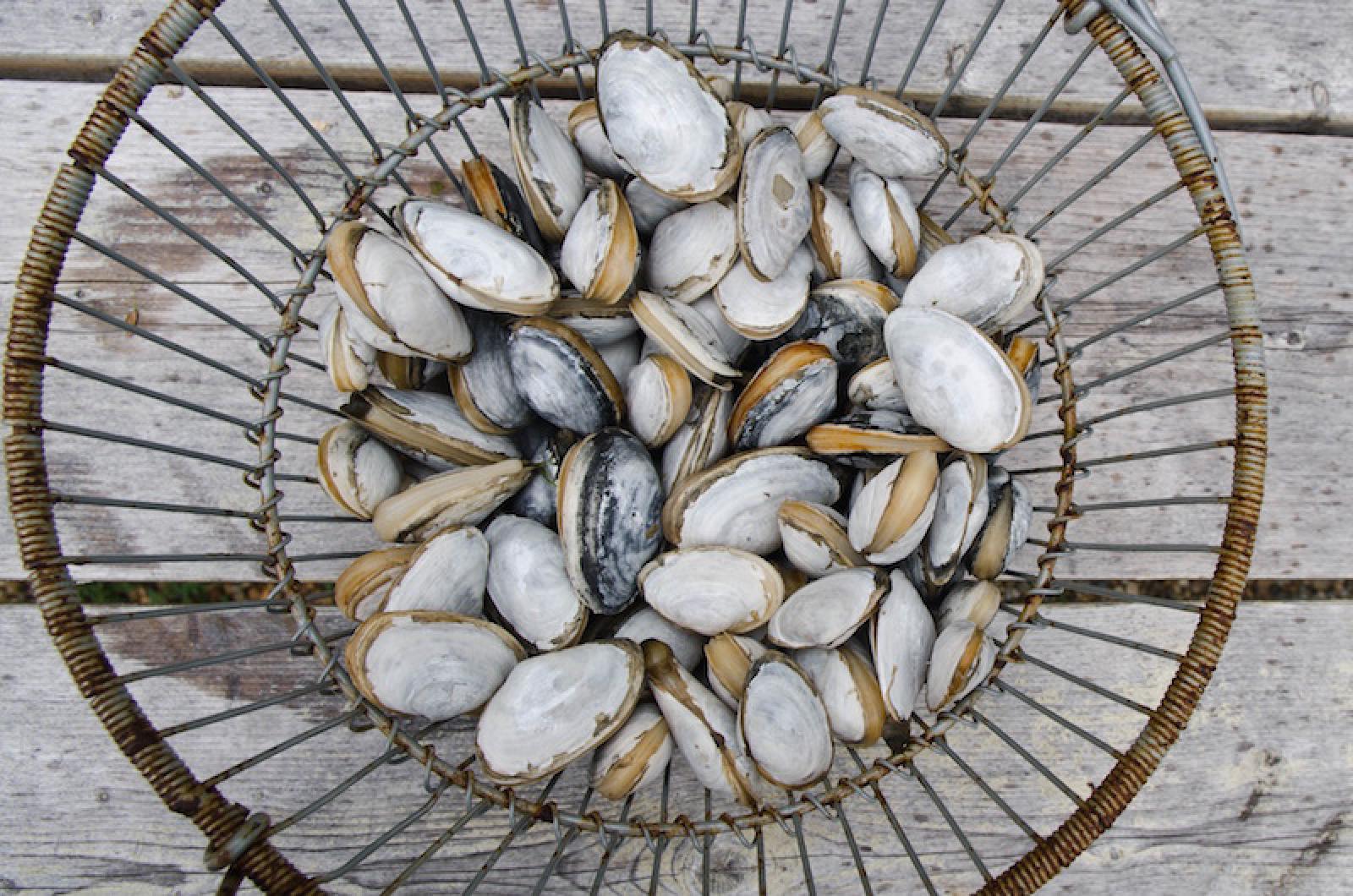Bivalve lovers are feeling a bit shell shocked after the Oct. 10 closure of Island shellfish beds. In case you hadn’t heard, as of this writing, all Martha’s Vineyard ponds and harbors are closed to shell fishing (excluding scallops). Results of testing of shellfish from local waters are forthcoming, and commercial and recreational shellfishers are in a holding pattern. This is a fluid situation (no pun intended), and may have changed by the time you are reading this.
The decision, made by the Massachusetts Division of Marine Fisheries (DMF), is due to a potentially toxic phytoplankton bloom. The phytoplankton in question is a diatom called pseudonitzschia. Diatoms are single-celled algae that photosynthesize and float freely in fresh and salt waters. Not all are problematic.
Pseudonitzschia is a genus of diatoms with approximately 46 known species. Of those, 19 species produce domoic acid, which is the compound that causes illness in people and other animals. While pseudonitzschia can be present in waters, trouble comes when this plankton increases or blooms enough to produce high concentrations of domoic acid.
As a clammer might, say, let’s dig a bit deeper.
Domoic acid causes a condition called amnesic shellfish poisoning (ASP) in humans and domoic acid poisoning (DAP) in other animals. Domoic acid concentrates in the guts of shellfish and in other animals, such as anchovies or sardines, which consume plankton. It will affect animals that eat those species, which is why birds, whales, humans and other animals are at risk for illness.
In one case in 2003, domoic acid was suspected in the death of 21 humpback whales on Georges Bank. Humans don’t fare better in the face of this planktonic predator. In one human outbreak in Canada in 1987, 153 confirmed cases of ASP produced four fatalities.
Amnesic shellfish poison causes both gastrointestinal and neurological symptoms. Gastroenteritis may cause cramps, diarrhea, nausea and vomiting and the domoic acid can even lead to renal failure in some. These symptoms usually appear within 24 hours of the consumption of infected shellfish.
Neurological effects come next, usually within 48 hours of ingestion. Dizziness, headaches, seizures, short term memory loss, coma and respiratory distress are possible, so this warning is to be heeded, especially for those that are young, old or have compromised immune systems.
The best way to stay safe is to not each shellfish harvested from the closed areas, since neither freezing nor cooking reduces domoic acid toxicity. Since the domoic acid concentrates in the gut of animals, some shellfish consumption is permitted during this closure. Scallops and whelks are not part of the ban, as we usually eat the muscle, rather that the gut of these animals, but take heed and be wary of viscera.
The decline of our shellfish beds has been blamed on poor water quality and nutrient overload. It is a tragedy for those that make their living off of the sea and those of us that enjoy the water’s bounty.
For now, we wait for the results of the tests that will ascertain whether our local shellfish has been affected.
Roman naturalist Pliny the Elder would not sympathize with our eagerness to return to eating shellfish and might even be smiling in his grave at our misfortune. He insisted “shellfish are the prime cause of the decline of morals and the adaptation of an extravagant lifestyle. Indeed, of the whole realm of Nature, the sea is in many ways the most harmful to the stomach, with its great variety of dishes and tasty fish.”
French writer Emile Zola also dwelt on the culinary delights we have been missing out on: “What will be the death of me are bouillabaisses, food spiced with pimiento, shellfish, and a load of exquisite rubbish which I eat in disproportionate quantities.”
As long as we keep to proportionate quantities, we should be just fine — once the shellfish beds are.
Suzan Bellincampi is director of the Felix Neck Wildlife Sanctuary in Edgartown, and author of Martha’s Vineyard: A Field Guide to Island Nature.






Comments
Comment policy »